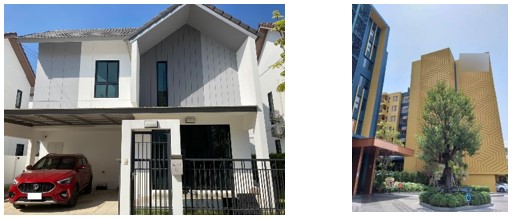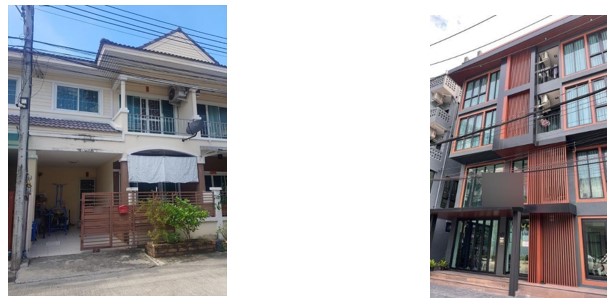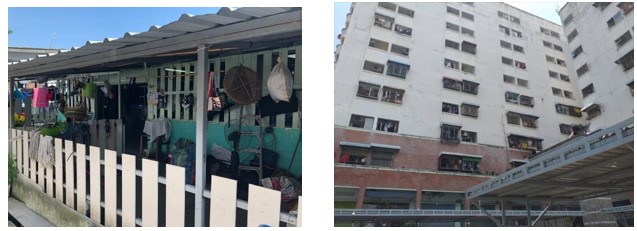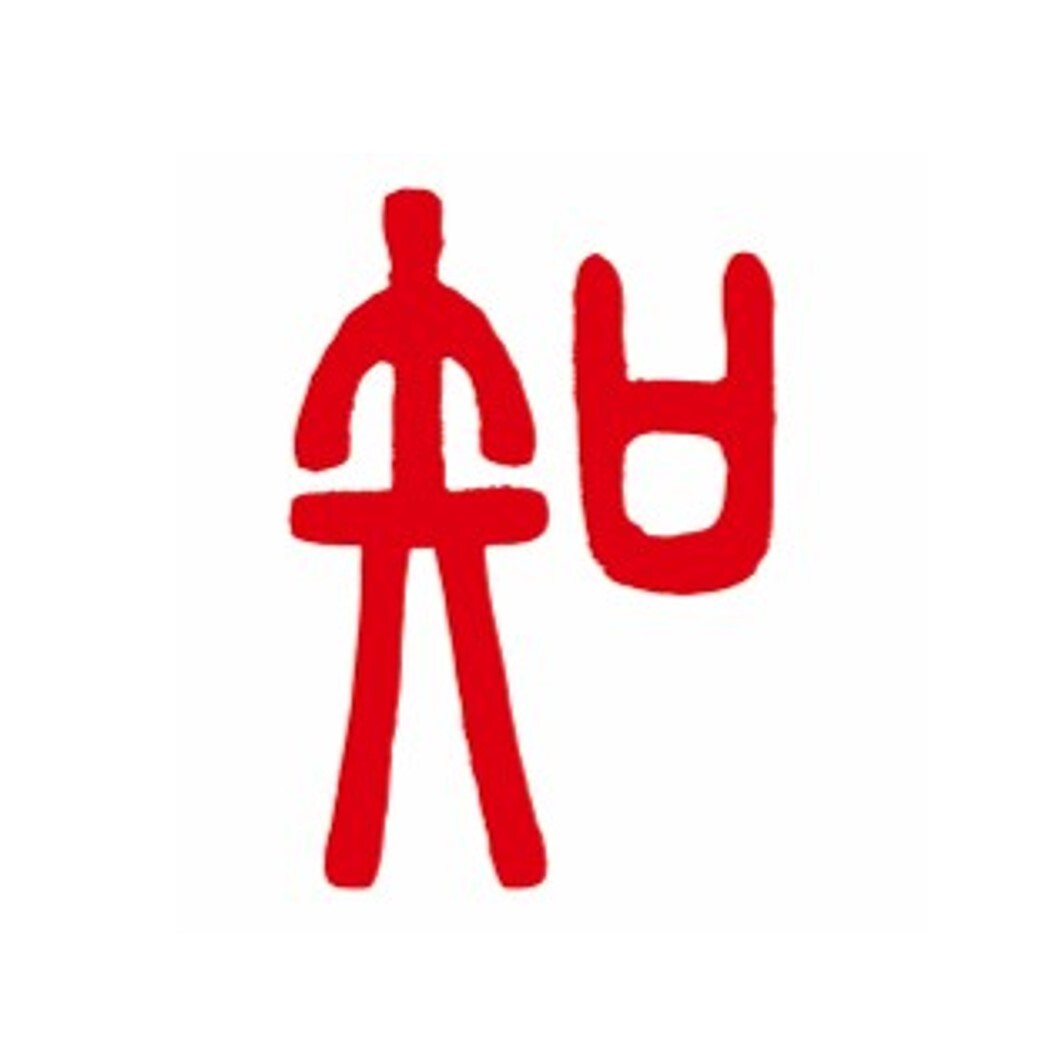[Bangkok, Thailand, by SEC (Socio-Economic Class)] Housing
- Release date: Dec 19, 2024
- 4320 Views
Related Articles
[Bangkok, Thailand, by SEC (Socio-Economic Class)] Eating Habits
Introduction.
Housing is one of the most expensive purchases in life in any country. In addition, the standard of living, personal values, and even the culture of a country can often be revealed by looking at the housing and living environment.
In this column, we will compare housing in the suburbs of Bangkok, Thailand by Social Economic Classification (SEC) and introduce some of the characteristics found in each SEC.
Housing Conditions in Thailand
Thailand has a hot and humid tropical monsoon climate throughout the year, with an average annual temperature of about 29°C, making it a hot and humid environment. The majority of the population is Buddhist (94.6% in 2015).
In Thailand, the percentage of homeowners is higher than renters, and the most common time to consider purchasing a home is when one enters the workforce or gets married (according to an Intage Self-Proposed Survey (2020)). In many cases, a loan is taken out at the time of purchase, and “paying rent is a waste” and “paying a loan = my asset” were cited as attitudes toward purchasing. As for the importance of purchasing a house, respondents tended to place importance on “bedrooms” and “exterior appearance,” with the percentage increasing especially when the SEC is high. In addition, “sunlight (natural light)” and “good ventilation” are often emphasized, suggesting that the functional aspect of windows seems to be important.
In this paper, SEC is defined as follows in terms of monthly household income, and differences by SEC are discussed using data from Consumer Life Panorama (commonly known as CLP), a visual database of overseas consumers provided by Intage.
SEC A: THB 80,000 or more
SEC B: THB 50,000 - 79,999
SEC C: THB 25,000 - 49,999
SEC D: THB 15,000 - 24,999
Overseas (especially in emerging countries such as Asia), the difference in living standards by SEC is much larger than in developed countries, and this is one of the important criteria for target setting in marketing. We hope this report will be helpful in visualizing the kind of living environment in which the target class of consumers actually live.
Talking about the type of house between SEC
In this column, dwellings are classified into the following four categories.
1.Detached house
2.Townhouse/Townhome
3.Condominium
4.Apartment/Flat/Mansion.
(Others include Shop lots/Commercial buildings, etc.).
SEC A often live in detached houses, condominiums, and townhouses. Compared to other SECs, detached houses have a larger living area (the average size of CLP-registered households is 183.8 m2), while condominiums are often high-rise apartments.
<Detached house photo (TH_57) > <Condominium photo (TH_142)>

Reference: INTAGE Consumer Life Panorama
<SEC B Townhouse photo(TH_115)> <SEC B Condominium photo(TH_136)>

Reference: INTAGE Consumer Life Panorama
In SEC D, detached houses and apartments made of wood and tin are conspicuous, and the average living area of detached houses (among registered CLP households) is 108.4m2, which is one size smaller than that of SEC B/C.
<Wooden and tin constructionDetached house photo (TH_73) > <Apartment photo (TH_111)>

Reference: INTAGE Consumer Life Panorama
A closer look at the differences between the SECs reveals that the difference in the number of rooms between SECA, SEC B/C, and SEC D is related to the difference in room size, with storage rooms, utility rooms, and altar rooms seen in SECA decreasing in SEC B/C and almost non-existent in SEC D. SEC B/C, and almost none in SEC D.
On the other hand, a common feature among the SECs that seems to differ from Japan is the location of the entrance and living room. In many houses in the suburbs of Bangkok, the entrance door opens directly into the living room, and there is almost no earthen floor or stile, as seen in Japan. In addition, the opening area of the front door in detached houses seems to be wider than in Japan. In addition, the overall size of the windows is large, and the number of windows in one place is also large.
As mentioned in the previous section, the living room is usually the first thing you see when you open the front door in the suburbs of Bangkok, so this section will discuss the differences in living rooms in different SECs. First, let's look at the furniture that tends to sit in the living room, with a focus on sofas.
In SEC A and B, most of the living rooms are furnished with sofas. In SEC B, more of the materials are fabrics and the shapes are I-shape than in SEC A.
<SEC A Leather L-Shape Sofa Photo(TH_19)> <SEC B Fabric I-Shape Sofa Photo>

Reference: INTAGE Consumer Life Panorama
In SEC C, the trend of sofas is similar to that in SEC B, but the proportion of sofas in SEC C has decreased, and in SEC D, the proportion of sofas in SEC D is much smaller than in other SECs, probably due to the smaller living space, and in some cases, wooden couches are placed instead.
<SEC D Living room photo without sofa(TH_73)> <SEC D Wooden Long Suu Photo>

Reference: INTAGE Consumer Life Panorama
Regarding the size of the living room, it can be imagined that “SEC A > SEC B/C > SEC D”, probably based on the correlated average living area, and it can be inferred that the L-shaped sofa and sofa installation are only an option in living rooms that have a certain amount of space.
Living room flooring
In order to look for differences between SECs, we again looked around the living room and noticed the floors and walls that are common to all houses. Although walls (wallpaper and cloth) are also elements that contribute greatly to the overall atmosphere of the house, they are mainly white or pale blue throughout the SECs, and it was difficult to see differences among the SECs.
In SEC A, the detached houses and town houses have simple marble or marble-like tiles, while the condominiums have mainly wooden floors. In SEC B, the flooring materials do not differ significantly from those in SEC A, but are often recognizable at first glance as tiles.
<SEC A tile(TH_57)> <SEC A wooden flooring(TH_142)>

Reference: INTAGE Consumer Life Panorama
In SEC C, some detached houses and town houses with flooring materials and wood are seen. In addition, more tiles with colors and patterns are used in the houses than in SEC A and B. Also, more tiles with a sense of use are seen.
<SEC C tile(TH_106)> <SEC C wooden flooring(TH_37)>

Reference: INTAGE Consumer Life Panorama
In SEC D, there are several detached houses made of wood, and for Apartment, there are many tiles, which is different from the trend in other SECs. Whether this is a difference in materials or age-related deterioration cannot be determined from the photos, but both materials are not very glossy and have a sense of use.

Reference: INTAGE Consumer Life Panorama
The common feature of each SEC is that the first floor is often tiled and the second floor is wood flooring, mainly in detached houses with a second floor, and few households had both the first and second floors tiled. In addition, stair treads are often made of wood.
Bathrooms and toilets
As mentioned in a past column (https://www.global-market-surfer.com/pickup/detail/230/), in Thailand it is common to have a shower, toilet, and sink all in one room, and the bathroom and toilet are called honnam. The type of toilet can be divided into two patterns, so-called Japanese-style and Western-style, with Western-style toilets on the rise in recent years. In the residences analyzed in this study, Japanese-style toilets were found in the SECC, but they were generally Western-style toilets.
Although there was no significant difference in the toilets, there was a difference in the proportion of households with a curtain, floor level, glass or acrylic partition or door separating the shower room from the toilet and those with no partition at all, with the lower SEC group being more likely to have no partition.
In addition, large plastic buckets and hand tubs for washing one's buttocks and feet were rarely found in SECs A and B, but were found in SECs C and D.
<Photo of bathroom with partitions(TH_14)> <Photo of partition-less bathroom(TH_111)>

Reference: INTAGE Consumer Life Panorama
In common with all SECs, the ability to store things is not often seen in the bathroom. If there is a shelf near the shower, what appears to be body soap or shampoo is placed there, but in many dwellings, it can be observed that things are placed on the toilet tank, on a rear-mounted shelf, next to the washbasin, or on the floor. The range of items seems to be wide, from hygiene products and oral care products to cleaning supplies and detergents. While the number of items varies from person to person, the overall impression is that the items are miscellaneous, perhaps because they are arranged in a limited space.
Summary
One of the research methods is the home visit/observation survey. This is a qualitative research method in which the researcher actually visits the target consumers' homes to observe and interview them about their daily lives and the target products. Unlike surveys conducted by gathering the target audience at a venue, this method provides a wealth of realistic information on the target consumers. In addition to the merit of being able to observe in detail the actual usage and usage environment of the category being surveyed, it is also characterized by the ability to obtain information surrounding the product or service (target consumers' lifestyles, values, hobbies, and preferences, etc.) to gain a deeper understanding of consumers.
Consumer Life Panorama (CLP), cited in this column, has a rich stock of visual data on sei-katsu-sha in various countries. These data can be used as a “no-field” home visit survey to get a realistic picture of category usage and to understand the overall lifestyle of the target consumers.
Since it is difficult to imagine the target consumers in overseas markets, it is important to understand overseas consumers more clearly and conduct overseas marketing planning by using visual data.
Translated with AI Translator
What is Consumer Life Panorama?
This is a website-type database that has accumulated visual data on more than 1,000 sei-katsu-sha from 18 countries around the world. The database includes many 3D models of living environments and 2D data of items owned by each sei-katsu-sha, and is useful for understanding overseas sei-katsu-sha, which is difficult to grasp using only letters and numbers.
For more details, click here.
-

Author profile
Takumi Ueda
He is involved in marketing research for durable goods manufacturers, both in Japan and overseas. When he travels abroad, he visits supermarkets to observe people living in the area, and he finds it interesting to unravel their preferences based on the package designs of the products on display.
-

Editor profile
Risa Takahama
Global Market Surferのサイト作りを担当。
 Global Market Surfer
Global Market Surfer CLP
CLP